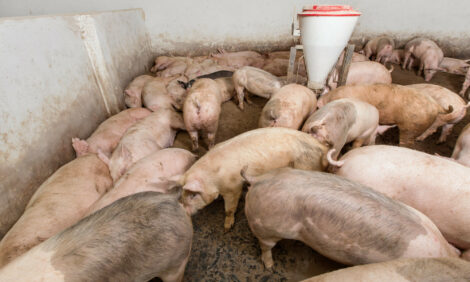



Danish Industry Faces Tough Environmental Measures
The Danish pig and farming sector is finding itself controlled by more and more regulations and directives to govern the environment, writes ThePigSite senior editor, Chris Harris.With nearly two thirds of the country devoted to agriculture, the industry is being forced to find ever more efficient livestock production systems to meet environmental needs.
However, the distribution of pig cattle and horticultural activities in the country is uneven across the country and the size of farms is increasing while the numbers are falling, according to Erik Jørgenson from the Danish Agriculture and Food Council.
The agricultural industry is facing major environmental concerns over the eutrophication of costal waters with nitrogen, lakes with phosphorous and the land through ammonia.
Mr Jørgenson said that as the country has a long coast ling with still waters around it, it is prone to a build up of algal bloom.
However, Denmark has seen environmental restrictions and regulations in place since the mid 1980s and it has a target to reduce its nitrogen load in agriculture by 50 per cent and its phosphorous load, primarily through waste water, by 80 per cent.
"We have a long tradition of rules on environmental restrictions," Mr Jørgenson said.
"Some important measure, such as the minimum requirements for storage capacity. Were introduced more than 20 years ago. They came in before the nitrate directive."
The latest measures the Danish farming industry has to face is laid out in the Green Growth agreement.
Under the Nitrates Directive, which was fully implemented in 2002/2003, the whole of the country has been designated a Nitrate Vulnerable Zone.
The directive requires farmers to issue annual reports on their nitrate usage and it restricts the amount of nitrogen in the manure used on the land to be 70 per cent for cattle, 75 per cent for pigs and 65 per cent for poultry. The maximum application of manure is 170-230Kg of Nitrogen per hectare and pigs and poultry 140 Kg/N per hectare.
The directive also places strict requirements for spreading solid manure and also when the manure can and cannot be spread.
On top of the directive, the Danish industry is also controlled by another series of rules that outline action plans for the reduction of phosphorous and nitrates, and aquatic action plans for the reduction of N and P into the water system.
Mr Jørgenson said that since the mid 1980s the country had seen its nitrogen surplus reduced by 56 per cent between 1985 and 2007 and its phosphorous surplus reduced by 77 per cent and ammonia los reduced by 48 per cent.
Mr Jørgenson said that all the action that had been taken had seen a big improvement in the quality of the environment.
He said that the industry now has to be more targeted, but some of the regulations had had an economic impact on the farming community.
Tight regulations are enforced if a farmer wants to build a new pig house as aspects such as the proximity to neighbours has to be taken into account.
He added that any developments that might have an environmental impact could take a long time to get through.
Now the Green Growth environmental measures are likely to place further restrictions on the farmer.
New national targets were agreed in June this year - targets that are over and above those laid down in the Nitrates Directive.
The measures include the provision of an additional 140,000 hectares of land for catch crops, no tilling in autumn, mandatory buffer strips along water courses and a potential for transferable nitrate quotas.
Mr Jørgenson added that there will also be further demands on ammonia output that could cost the equivalent of approximately DKK500 million a year.
October 2009








